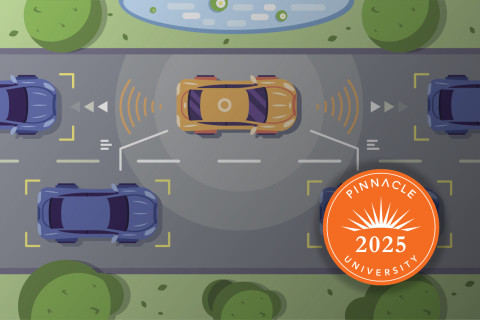
Reptile Theory Leading to More Nuclear Verdicts in the Trucking Industry
After a trucking firm was involved in a fatal accident in 2017, a Nassau County, Florida, jury rendered a $1 billion verdict – the largest verdict in a commercial auto liability case – against that firm. Another accident in 2014 involving icy road conditions on an interstate highway in Odessa, Texas, resulted in a jury verdict of just under $90 million against a large national trucking carrier. Both cases are under appeal.
Such nuclear verdicts (verdicts over $10 million) are becoming more common and contribute to significant angst experienced by commercial auto executives, underwriters and claims handlers across the country. A common theme in these matters is how plaintiff attorneys have been successfully employing reptile theory.
Reptile theory is a strategy used in depositions and courtroom proceedings. The strategy plays on juror emotions and is designed to build a perception that the defendant’s conduct was a threat to their own personal safety and/or to the community at large. The theory was initially introduced in a book by David Ball and Don Keenan called “Reptile: The 2009 Manual of the Plaintiff’s Revolution.”
The strategy uses broad safety rules, company standards and admonitions, such as “Safety is the highest priority for your Company,” or “Your Company would never endanger the public.” When such rules are suggested, a defendant is apt to agree, imperiling the Company’s ability to prevail at trial.
Such hypothetical questions can be twisted to allege a variety of situations that many would deem inherently unsafe:
- drivers with prior accidents being allowed to continue driving
- drivers-in-training driving in severe weather conditions
- truck inspections outside the recommended timeframes
- cell phones in the cab of the rig being an inherent distraction
- tread wear less than 100% being an inherent hazard that will contribute to an accident’s severity
The $1 billion jury verdict involved more than $100 million going to parents of the deceased driver for pain and suffering, with $900 million in punitive damages against the trucking firm. Evidence in support of the Company’s negligence stated that the driver was distracted by a cell phone, was driving over the legal limit of hours and did not have a commercial driver’s license. Furthermore, the driver had previous violations for both driving aggressively and speeding, and the trucking company did not conduct a background check on the driver. The case demonstrates the plaintiff’s lawyer’s ability to convince the jury that the defendants were a threat to society, and that the verdict is a deterrent to protect the community.
In the $90 million verdict, the plaintiffs argued that the driver should have pulled off of the interstate due to icy conditions, and that the Company should have instructed its driver to avoid the interstate due to poor conditions.
While reptile theory arguments are prohibited in some jurisdictions, in certain courtrooms, the intent is to have jurors react emotionally to the arguments rather than focusing on an objective evaluation of the actual evidence of the case. Defense counsel in such matters are keen to recognize these arguments and state their objections on the record to the extent an appeal is necessary. A proper defense against reptile theory is essential to help prevent such nuclear verdicts.



